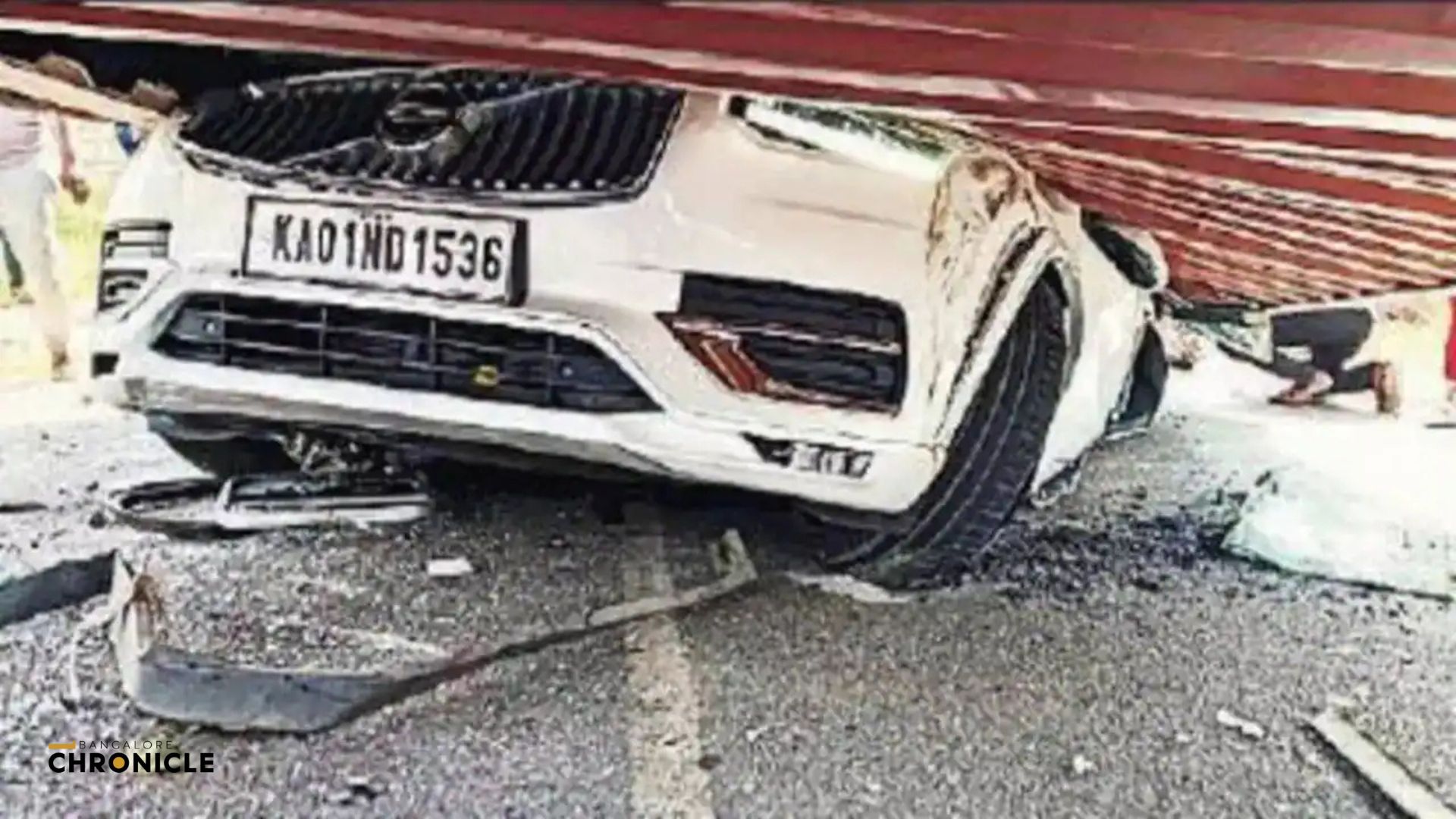
A devastating accident occurred on Saturday along National Highway 48 near Nelamangala, Bengaluru. The crash tragically took the lives of six family members, including a CEO. Their vehicle was a Volvo SUV that was crushed by a container truck that overturned.
Sequence of Events
According to police investigations, the accident began with an Eicher truck carrying aluminum pillars. The driver lost control of the truck while trying to avoid colliding with another vehicle. The truck, moving at high speed, veered across the median. It then overturned onto the oncoming Volvo SUV that was on its way to Tumakuru. The immense weight of the truck crushed the SUV, resulting in the immediate deaths of all its occupants.
After the initial impact with the SUV, the Eicher truck collided with a tempo. Fortunately, this collision caused minimal damage. Eyewitness accounts describe the scene as chaotic. The aftermath was recorded on CCTV cameras, and authorities are currently analyzing the footage for further insights.
Road Safety Concerns
This tragic accident raises serious questions about road safety in India. Even vehicles known for their advanced safety features were unable to protect their passengers in this extreme scenario. Volvo is globally recognized for its commitment to safety, yet this incident underscores the limitations of vehicle safety standards in the face of massive impacts.
Critics point out that while having high safety standards in vehicles is essential, it is equally crucial to consider road conditions. The current state of infrastructure and enforcement of traffic laws significantly contributes to such incidents. The absence of adequate median barriers is a recurring issue on many roads. Additionally, speeding, particularly by heavy vehicles, remains a persistent problem.
Concerns about driver training for heavy vehicles are also paramount. Many believe that drivers of large trucks require more rigorous training to manage their vehicles safely. The combination of these factors increases the risks on the road and often leads to devastating consequences.
Public and Official Reactions
In the wake of this tragedy, authorities have vowed to conduct a comprehensive investigation. They will focus on potential negligence and any mechanical failures of the vehicles involved. Public outrage following the accident has sparked widespread calls for change. Many citizens are demanding stricter regulations regarding heavy vehicles.
There is also a push for better maintenance of highways. Observers believe that improving road conditions may help prevent future incidents. On social media platforms, voices are raised for urgent government action. The public is increasingly frustrated with the inadequacies in road safety measures and is calling for more accountability.
The Need for Urgent Action
This accident serves as a harsh reminder of the fragility of life on India’s roads. It highlights the immediate need for reforms to improve roadway safety for all users. Advocacy for installing robust median barriers is gaining momentum. These barriers could help prevent trucks from crossing into oncoming lanes, thus protecting smaller vehicles.
Moreover, enforcing load and speed regulations for heavy vehicles is crucial. Stricter enforcement could mitigate the risks associated with oversized trucks traveling at high speeds. The implementation of enhanced emergency response mechanisms is also essential. Quick response times can save lives in the event of an accident.
The collective sentiments of the public and officials urge a shift in priorities. Safety measures must become a central focus for both government and industry leaders. The combination of legislative action and infrastructure improvement can play a vital role in creating safer roads.
Bridging the Gap
To effectively bridge the gap between vehicle safety and road conditions, cooperation is key. Collaboration among government agencies, law enforcement, and vehicle manufacturers is essential. Together, they can work towards creating a holistic approach to road safety.
Investment in education for drivers is also necessary. Comprehensive training programs could equip drivers with the skills needed to handle their vehicles safely under various conditions. This includes teaching them how to respond to sudden hazards effectively.






